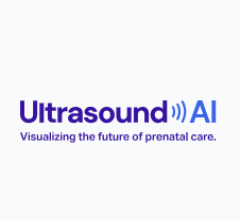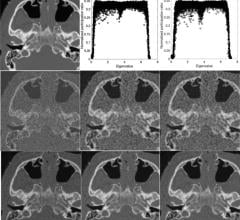May 29, 2008 – A 25 percent increase in abdominal imaging is due to the widespread use of advanced imaging modalities such as computed tomography (CT) and CT angiography (CTA), according to a study published in the June issue of the Journal of the American College of Radiology (JACR).
The study, “Recent Trends in Utilization Rates of Abdominal Imaging: The Relative Roles of Radiologists and Nonradiologist Physicians” researched recent trends in the utilization of abdominal imaging in the Medicare population, and compared Medicare Part B data from both radiologists and nonradiologist physicians.
The Medicare Part B databases for 1996 through 2005 were reviewed, and all Current Procedural Terminology, 4th ed, codes pertaining to noninvasive imaging of the abdomen and pelvis were identified. The codes were grouped into six categories: computed tomography angiography, magnetic resonance and MR angiography, ultrasound, radionuclide imaging, plain radiography and gastrointestinal fluoroscopy.
It was found that radiologists strongly predominate in abdominal imaging, and this may be one reason why growth has been modest. In recent years, the increase in the utilization rate of abdominal imaging among the Medicare population was moderate, at 25 percent over nine years. There was a substantial increase in the use of CT and CTA and a smaller increase in the use of ultrasound. The use of plain radiography and gastrointestinal fluoroscopy declined.
Global and professional-component claims from all places of service were tabulated for the six categories. Utilization rates per 1,000 Medicare fee-for-service beneficiaries were calculated. Medicare physician specialty codes were used to identify examinations by radiologists and nonradiologist physicians. Overall utilization trends were studied, as were those among radiologists and nonradiologists.
The overall utilization rate increased from 451.9 examinations per 1,000 beneficiaries in 1996 to 564.5 in 2005, a 25 percent increase. The utilization rate for CT rose from 99.4 examinations in 1996 to 239.3 in 2005 (141percent). Plain abdominal radiography utilization dropped from 144.1 examinations to 125.4 (13 percent), while GI fluoroscopy dropped from 67.3 examinations to 34.8 (48 percent). Ultrasound showed an increase from 126.6 to 142.2 (12 percent). The utilization rates for radionuclide and MR studies were much lower; the former showed an increase of 8 percent, and the latter showed an increase of 365% over the period of the study. The two categories of radiographic studies (plain abdominal radiography and GI fluoroscopy) together constituted 47 percent of all abdominal imaging in 1996, but this dropped to 28 percent in 2005.
For more information: www.acr.org


 December 23, 2025
December 23, 2025 









